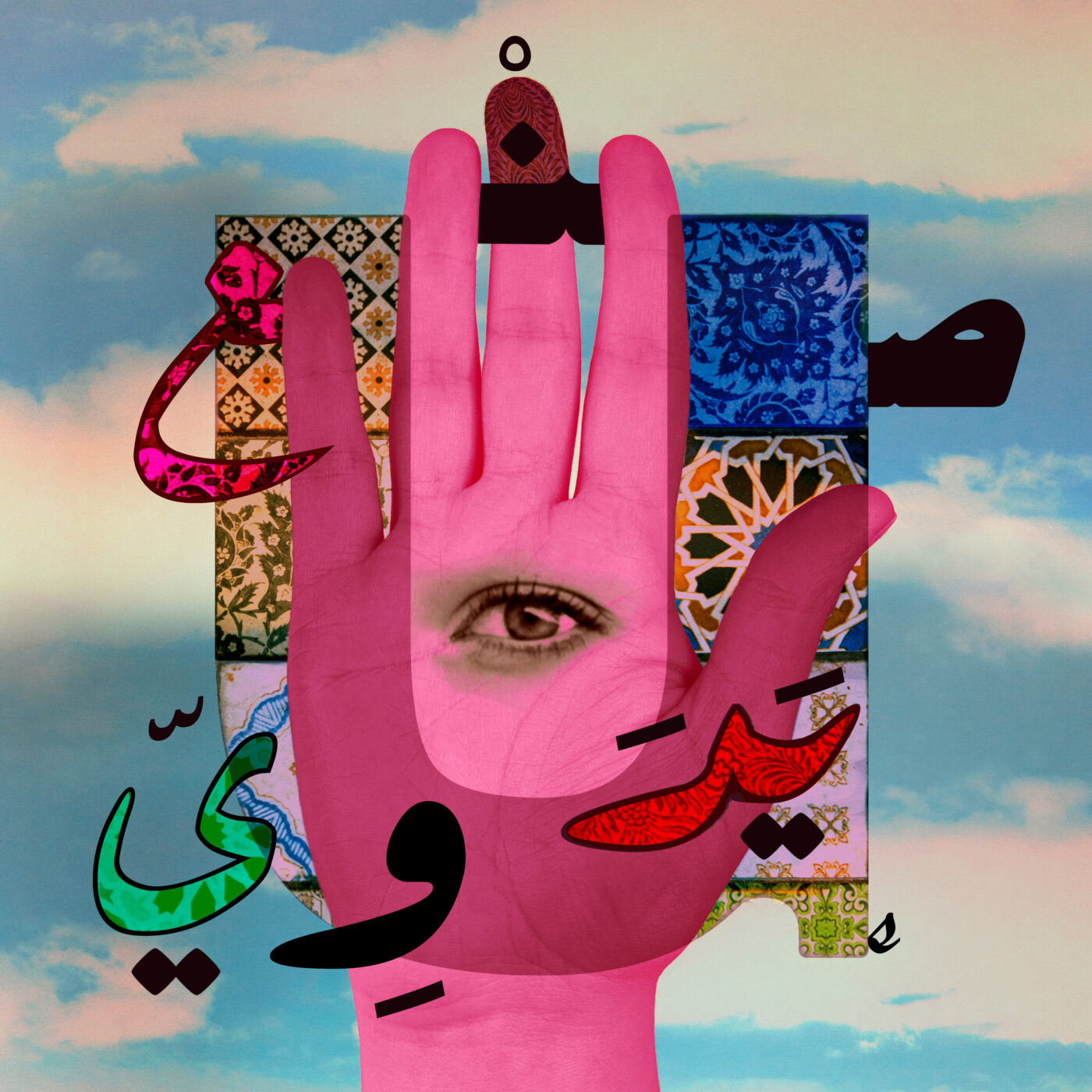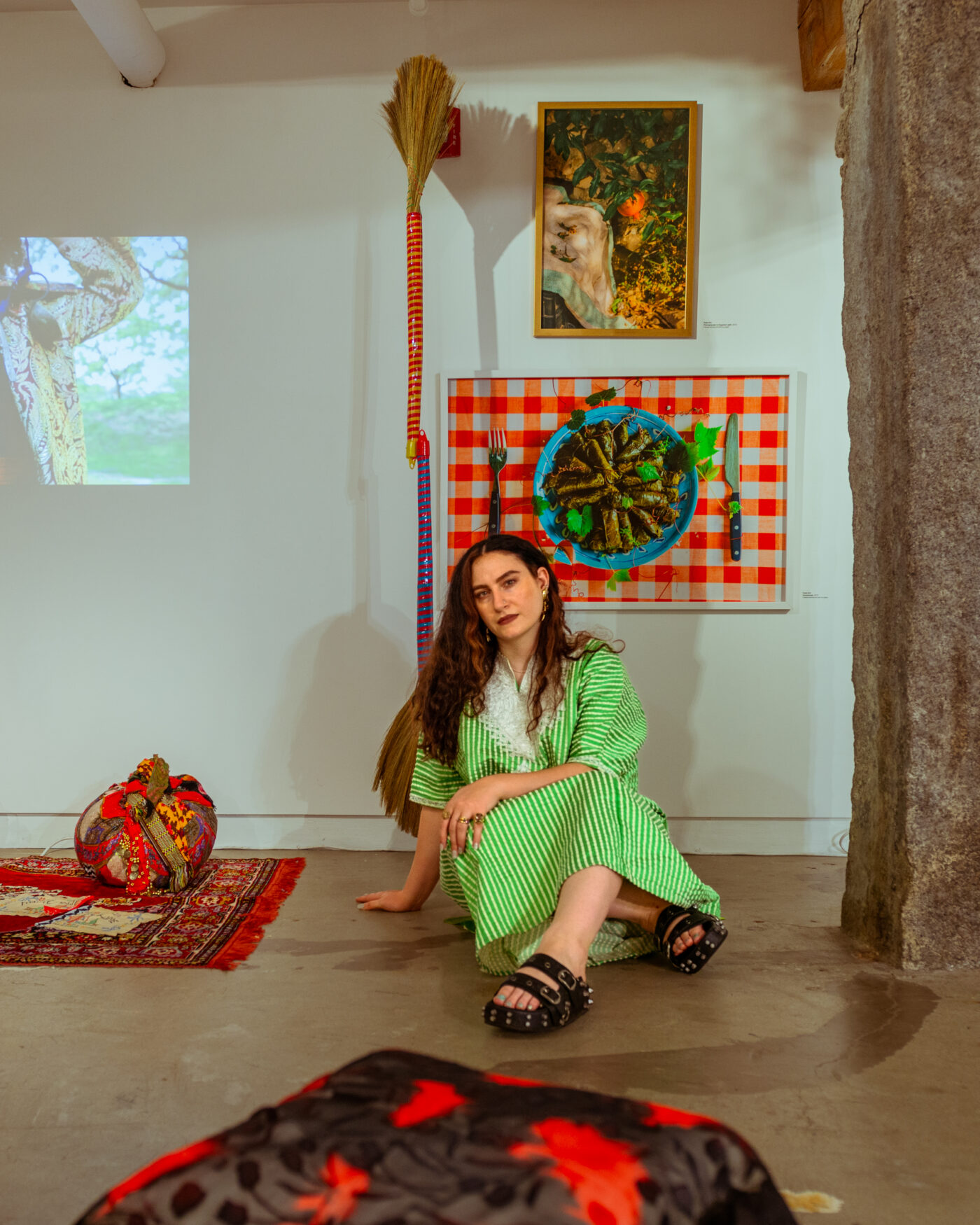Creative Intention for Arab American Heritage Month with Artist Feda Eid
We are delighted to uplift Arab American Heritage Month through the artwork of Feda Eid, this month’s featured artist. Feda explores creation, care, and work in the context of layered and interconnected worlds. She invites us as makers and builders to critically examine our historical and current impacts on communities, and to build with intention and care.

Statement by the Artist:
My “U” design is centered around US as makers and builders of interconnected worlds. The layers include Arabic calligraphy which reads “made by hand” or “handmade,” images I have taken of ornate tiles in Beirut, my hand in a bright shade of pink which I personally associate with being an Arab woman, clouds and skies, and my eye for imagining through both the past and future. Both the hand and eye are powerful and ancient symbols of protection to ward off evil in the SWANA region (Southwest Asia and North Africa). The piece is also inspired from artwork and excerpts from The Prophet by Khalil Gibran on working with love.
“And what is it to work with love?
It is to weave the cloth with threads drawn from your heart,
It is to build a house with affection,
It is to sow seeds with tenderness and reap the harvest with joy,
It is to charge all things you fashion with a breath of your own spirit,
And to know that all the blessed dead are standing about you and watching…
Work is love made visible.”
-Khalil Gibran
Khalil Gibran immigrated from Lebanon as a child in the 1880’s and grew up in the south end, which was a part of Little Syria of Boston which includes parts of Chinatown. The Prophet was written here in Massachusetts. Much of this community was forced to leave during the creation of the mass turnpike. Mariam Alyakoob, Arab America Contributing Writer, wrote that “This is primarily due to the effects of the Boston Redevelopment Authority (BRA), which in the 1950s began knocking down old neighborhoods and began different urban renewal projects that were incredibly controversial among the residents living in the area. Many homes were demolished to make way for the Massachusetts turnpike freeway, which opened in 1957.”
I thought this history tied in well with the discussions I hope to have around the ways we build communities, the indigenous lands we occupy and the ethics around the continued displacement of Black and Brown communities. I don’t know all the answers but I know when I look within- our hearts, with our soul’s eye, and reflect that work with our hands and what we create, we can begin to build with intention and care. Both the art and architecture institutions must reflect on the harm they cause within communities and the interconnected ways gentrification, capitalism, accessibility, colonialism and imperialism play a part in how things continue to be built here.
-Feda Eid, April 2025

About Feda:
Feda Eid is a Lebanese diaspora visual artist and photographer living in the occupied lands of Wampanoag and Massachusett People- so called Quincy, MA. Her work explores the expression of heritage, culture, identity and often tense but beautiful space between, what is said, what is felt, and and what is lost in translation. Using the everyday, passed down and reimagined as openings to ancestral wisdom and the Sacred. She captures these emotions through her bold use of color, textiles, adornment and pop culture linking the past and present. Feda is guided by her family’s journey as Lebanese immigrants who fled the country’s civil war in 1982 and her childhood growing up as an Arab and Muslim in the US.
Feda studied Sociology at Regis College and photography at New England School of Photography. Her work has been exhibited at the Peabody Essex Museum, Isabella Stewart Gardner Museum, Lesley University, and The Shed NY among others. She was 2019 Luminary and Visiting Studio Artist at The Isabella Stewart Gardner Museum, 2022 Massachusetts fellowship Artist in Residence at Mass MoCA Studios, 2022 Collective Futures Fund grantee, 2024 Foundation For Contemporary Arts grantee and awarded WBUR’s 2024 The Makers, Boston’s 10 artists of color whose work you should know.